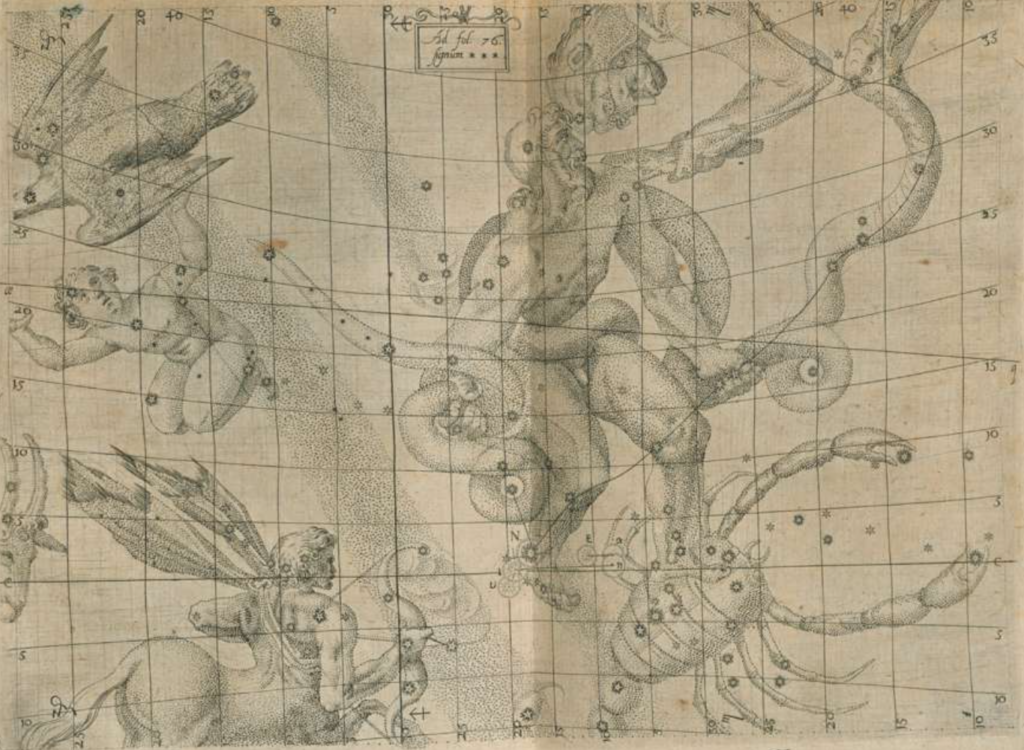In December 2020 there was a rare astronomical event at the winter solstice: a great conjunction. A conjunction occurs whenever two astronomical objects appear close together in the sky. A great conjunction is a conjunction of the planets Saturn and Jupiter, the slowest-moving planets visible to the naked eye.
A great conjunction occurs every twenty years, but a great conjunction at Christmas occurs much less frequently, and this great conjunction was notable for Saturn and Jupiter coming especially close together and for its predicted visibility. Media coverage emphasised the rarity of the event — Sky at Night called it ‘more than just a once-in-a-lifetime opportunity’. But some journalists also found an irresistible connection between great conjunctions and the Christmas story. The early modern astronomer Johannes Kepler (1571-1630), they claimed, had argued that the Star of Bethlehem heralding the birth of Jesus Christ might itself have been a conjunction of planets.
Asked by one media organisation to comment on this story, I requested a little time to look into it. I’m glad that I did. The idea that Kepler might have ‘explained’ the Star of Bethlehem as a great conjunction wasn’t at all implausible — early modern science and early modern religion were intimately intertwined, and Kepler’s astronomical studies were particularly strongly informed by his beliefs. But it also seemed a little odd to me that the work in which Kepler supposedly made this claim treated a nova, or new star, which appeared in the skies in 1604. Why wouldn’t Kepler have argued that the star of Bethlehem was a nova, an even rarer event than a great conjunction? A nova, after all, was a star, whereas a great conjunction could only be mistaken for one by a less-than-competent astronomer.
As any historian would, I went back to the source: Kepler’s De nova stella, published in Prague in 1606. I also did a quick literature search, and found two relevant articles. The first of these, published in 1977, explored the hypothesis that the star of Bethlehem was in fact a nova, and rejected the idea — which its authors again attributed to Kepler — that it might have been a conjunction. But the second article I found, which had been published in 1937, confirmed my own reading of Kepler’s De nova stella. Kepler had himself suggested that the star of Bethlehem was a nova, not a conjunction, although he did think that novae and conjunctions were causally connected, and therefore supposed that a conjunction had preceded the nova. This second article also studied the origins of the story, tracing the misinterpretation of Kepler’s views back to an early nineteenth-century text. The claim that Kepler had suggested that the star of Bethlehem was a conjunction was, in short, just a persistent historical myth.
This brief investigation, which took up no more than a few hours of my professional life, prompts several thoughts about historical research and the expertise of the historian. My work was conducted under conditions of lockdown — but I was nevertheless able to access both the primary source I needed and the most relevant articles digitally. That is still something to be grateful for, and not yet a given in historical research. We have not yet digitised everything. Perhaps digitisation explains why I easily found a 1937 article that the authors of the 1977 study had clearly overlooked. But it would be unwise for me or any other historian to be complacent about the advantages of digital access, without also recognising its drawbacks. Already in the sixteenth and seventeenth centuries, in the wake of what is often referred to as the printing revolution, scholars were complaining about ‘information overload’. What was true then is even more the case now. Better access to (some) sources and scholarship can make our life harder, rather than easier, by concealing the most useful resources under vast mountains of material. For this reason, amongst others, an ability to Google is not enough in itself.
I suspect that when I was approached to comment on the story about Kepler and the star of Bethlehem, the presumption was that I already knew the answers to the questions being posed. I didn’t. But I did know how to find them out. Journalists could have done so without my help. Most of them, it’s true, could not have skimmed Kepler’s De nova stella. But they could have used the 1937 article, freely available online, if they had thought to look for it, known how to do so, and been able to recognise its value amongst all the other material purporting to explain Kepler’s theory. Sometimes being an ‘expert’ just means knowing how to do the research.



